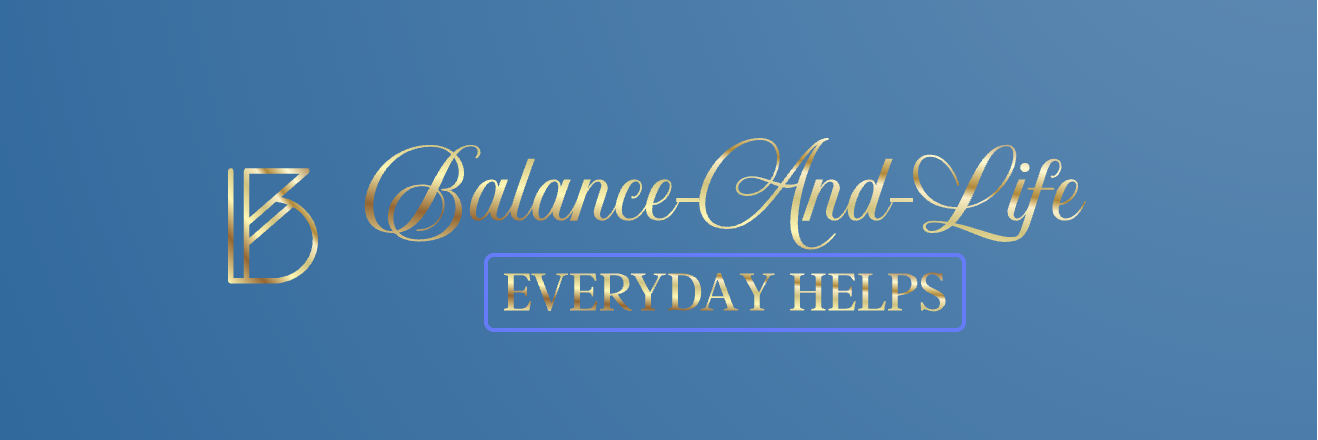In a speed- and productivity driven world, slowing down and getting back in touch with yourself has never been more critical. Meditation and relaxation are not indulgences everybody needs them. They provide mental acuity and emotional and physical health. With increasing global connectivity and expectations on society, leaning back and taking a few breaths has gone from being a spiritual exercise to being a necessity for wellness and optimal functioning.
The Modern Need for Mindful Pausing
Today’s average person checks their phone 96 times daily, receives 121 emails, and juggles multiple responsibilities simultaneously. This constant stimulation keeps our nervous systems in a perpetual state of functioning, activation, making it difficult to access the restorative states our bodies and minds desperately need. The ancient practices of meditation and relaxation offer us a pathway back to balance, providing scientifically proven methods to counteract the effects of our hyperconnected lifestyle.
Why Meditation and Relaxation Matter:
The Science Behind Stillness
Chronic stress can affect sleep, digestion, focus, and even the immune system. When we are always in “go mode,” our bodies continue to be filled with stress chemicals such as cortisol and adrenaline. Meditation and relaxation practice can help bring the body out of “fight or flight” and into a state of parasympathetic nervous system activation. This brings enhanced focus, diminished anxiety, and an overall greater sense of calm.
Harvard Medical School research indicates that frequent meditation actually changes the structure of the brain by adding gray matter to areas related to learning and memory and subtracting it from the amygdala, the fear center of the brain. These neural plastic changes occur very quickly those who complete mindfulness programs exhibit quantifiable changes in their brains within eight weeks.
The Stress-Health Connection: When we’re chronically stressed, our bodies produce inflammatory markers that contribute to various health problems, including cardiovascular disease, diabetes, and weakened immunity. Meditation and relaxation practices activate the body’s relaxation response, which:
- Lowers heart rate and blood pressure
- Reduces inflammatory markers
- Improves immune function
- Enhances cellular repair processes
- Balances neurotransmitters that affect mood and cognition
Comprehensive Benefits of Meditation

The advantages of regular meditation practice extend far beyond simple stress relief:
Mental and Cognitive Benefits:
- Enhances self-awareness and introspection
- Improves emotional regulation and impulse control
- Reduces symptoms of stress, anxiety, and depression
- Encourages mindfulness and present-moment awareness
- Increases attention span and concentration
- Boosts creativity and problem-solving abilities
- Enhances memory consolidation and recall
Physical Health Benefits:
- Reduces chronic pain and inflammation
- Improves cardiovascular health
- Strengthens immune system function
- Enhances sleep quality and duration
- Supports healthy aging at the cellular level
- May increase longevity through stress reduction
Emotional and Social Benefits:
- Increases empathy and compassion
- Improves emotional intelligence
- Enhances relationship satisfaction
- Builds resilience to life’s challenges
- Cultivates inner peace and contentment
- Develops greater self-acceptance
The Benefits to Meditation – Tricycle: The Buddhist Review
The Healing Power of Relaxation Techniques
While meditation focuses on awareness and mindfulness, relaxation techniques specifically target the body’s physical tension and stress responses:
Physical Benefits:
- Relaxes tense muscles and reduces chronic pain
- Improves quality of sleep and reduces insomnia
- Boosts mood and increases energy levels
- Helps lower blood pressure and heart rate
- Enhances digestion and metabolic function
- Reduces headaches and muscle tension
Mental Benefits:
- Calms racing thoughts and mental chatter
- Improves decision-making abilities
- Increases mental clarity and focus
- Reduces symptoms of anxiety disorders
- Enhances overall sense of well-being
Harvard Health Publishing
- Six relaxation techniques to reduce stress
- Stress Management: Enhance your well-being by reducing stress and building resilience
Evidence-Based Techniques to Transform Your Daily Life
1. Deep Breathing Mastery
The 4-7-8 Technique: Inhale for 4 seconds, hold for 7, exhale for 8. This pattern activates the parasympathetic nervous system more effectively than basic breathing exercises. Practice this technique when feeling anxious, before sleep, or during stressful moments.
Box Breathing: Used by Navy SEALs and first responders, this technique involves inhaling for 4 seconds, holding for 4, exhaling for 4, and holding empty for 4. Repeat for 5-10 minutes to achieve deep calm.
2. Guided Meditation Resources

Digital Platforms: Use apps like Headspace, Calm, Insight Timer, or Ten Percent Happier to follow audio-guided meditations. These platforms offer specialized programs for sleep, anxiety, focus, and personal growth.
Types of Guided Meditation:
- Body scan meditations for physical awareness
- Loving-kindness practices for emotional healing
- Concentration meditations for focus training
- Mindfulness meditations for present-moment awareness
3. Progressive Muscle Relaxation (PMR)
Systematically tense and release different muscle groups to reduce physical stress and increase body awareness. Start with your toes and work up to your head, holding tension for 5 seconds before releasing. This technique is particularly effective for people who carry stress in their bodies.
4. Mindful Movement Practices
Mindful Walking: Take slow, deliberate steps while paying attention to each foot’s contact with the ground, your breath, and your surroundings. This practice combines gentle exercise with meditation.
Tai Chi and Qigong: These ancient Chinese practices combine slow movements with breath awareness, providing meditation in motion.
Yoga: Integrates physical postures with breathwork and mindfulness, offering a comprehensive mind-body practice.
5. Nature-Based Restoration
Forest Bathing (Shinrin-yoku): This Japanese practice involves immersing yourself mindfully in nature. Research shows that even 20 minutes in a natural setting can significantly reduce cortisol levels.
Grounding Techniques: Direct contact with the earth (walking barefoot on grass or sand) has been shown to reduce inflammation and improve sleep quality.
Creating Your Personal Practice: A Practical Roadmap
Meditation and Relaxation Can Transform Your Life
Week 1-2: Foundation Building
- Start with 5 minutes of deep breathing daily
- Choose one meditation app and commit to using it
- Practice one relaxation technique before bed
Week 3-4: Expansion
- Increase meditation time to 10 minutes
- Add mindful walking to your routine
- Experiment with different meditation styles
Month 2-3: Integration
- Aim for 15-20 minutes of daily practice
- Include mini-meditation breaks throughout your day
- Begin incorporating mindfulness into routine activities
Long-term Sustainability
- Find meditation communities or groups for support
- Attend workshops or retreats to deepen your practice
- Adapt your practice to life changes and challenges
Overcoming Common Obstacles
“I Don’t Have Time”: Remember that meditation isn’t separate from life it enhances your efficiency and effectiveness. Start with just 2-3 minutes during transitions (before meals, after waking, before sleep).
“My Mind Is Too Busy”: A busy mind is exactly why you need meditation. The goal isn’t to stop thoughts but to change your relationship with them.
“I Can’t Sit Still”: Try walking meditation, gentle yoga, or standing meditation. Movement-based practices can be equally effective.
“I Don’t See Results”: Benefits often appear subtly. Keep a simple journal noting your stress levels, sleep quality, and mood to track gradual improvements.
The Ripple Effect: How Slowing Down Changes Everything
When you commit to regular meditation and relaxation practices, the benefits extend beyond personal well-being. You become more patient with family members, more creative at work, and more resilient during challenges. Your nervous system regulation improves, leading to better decision-making and healthier relationships.
Many practitioners report that slowing down actually helps them accomplish more with greater ease and enjoyment. This paradox occurs because a calm, focused mind works more efficiently than a stressed, scattered one.
Start Small, Stay Consistent: Your Journey Begins Now
You don’t require an hour or a dead-quiet room to enjoy these practices. Begin with a mere five minutes daily, maybe when you have a morning coffee or before bed. Frequency is more critical than time Five minutes a day is more beneficial than occasional longer stretches.
Over time, you’ll experience greater patience, mental acuity, and emotional strength. Meditation and relaxation are small daily investments with lifelong dividends. In our “do it at all costs” society, deciding to simply be is a radical act of self-love and intelligence.
Keep in mind that any expert was once a newbie. It’s not just personal healing that you’re wanting to happen by slowing down in a rapid-fire world it’s adding to a more balanced and mindful society. Begin today, begin small, but begin. Your future self will thank you for this gift of peace and presence.
Read more: The Extraordinary Power of Slowing Down: Meditation and Relaxation in Our Fast-Paced WorldHow to Create Meaningful Life That Truly Matters: Find Your Purpose
NOTA: “The information in this post is based on guidelines and research from leading health institutions including the American Psycological Association (APA), Harvard Medical School, and other recognized medical authorities.”
Mindful – Health mind, health life.

The Power of Slowing Down – Meditation and Relaxation
1. How quickly can I see results from meditation and relaxation practices?
Research from Harvard Medical School shows that measurable brain changes can occur within just 8 weeks of consistent practice. However, many people notice immediate benefits like reduced anxiety and better focus after just a few sessions. The key is consistency practicing 5 minutes daily is more beneficial than occasional longer sessions. Keep a simple journal tracking your stress levels, sleep quality, and mood to notice gradual improvements that might otherwise go undetected.
2. I have a very busy mind and can’t seem to quiet my thoughts during meditation. Am I doing it wrong?
A busy mind is exactly why you need meditation, not a reason to avoid it. The goal isn’t to stop thoughts but to change your relationship with them. Having racing thoughts is completely normal and doesn’t mean you’re failing. When you notice your mind wandering, gently redirect your attention back to your breath or chosen focus point. Each time you notice and redirect is actually a “successful” moment of mindfulness training.
3. What’s the difference between meditation and relaxation techniques, and which should I choose?
Meditation focuses on awareness, mindfulness, and training attention, while relaxation techniques specifically target physical tension and stress responses. Meditation includes practices like mindfulness meditation, body scans, and concentration exercises. Relaxation techniques include deep breathing (like the 4, 7, 8 method), progressive muscle relaxation, and nature-based restoration. Both are valuable, you can start with relaxation techniques for immediate stress relief and gradually incorporate meditation for long-term mental training.
4. I don’t have much time in my schedule. How can I realistically fit these practices into my busy life?
You don’t need an hour or a perfectly quiet room to benefit from these practices. Start with just 2 or 3 minutes during natural transitions, before meals, after waking, or before sleep. Try “micro-meditations” throughout your day: three deep breaths before checking emails, mindful walking between meetings, or the 4, 7, 8 breathing technique during stressful moments. Remember that meditation enhances your efficiency and effectiveness, so it’s not time taken away from productivity but an investment in it.
5. What are the actual health benefits I can expect from regular practice?
Regular meditation and relaxation practices offer comprehensive benefits across physical, mental, and emotional health. Physically, you can expect lower blood pressure and heart rate, reduced chronic pain and inflammation, improved sleep quality, and stronger immune function. Mentally, benefits include enhanced focus and concentration, improved memory, reduced anxiety and depression symptoms, and better emotional regulation. Research also shows increased gray matter in areas related to learning and memory, while reducing activity in the amygdala (fear center) of the brain. Many practitioners also report improved relationships, greater creativity, and increased resilience to life’s challenges.

